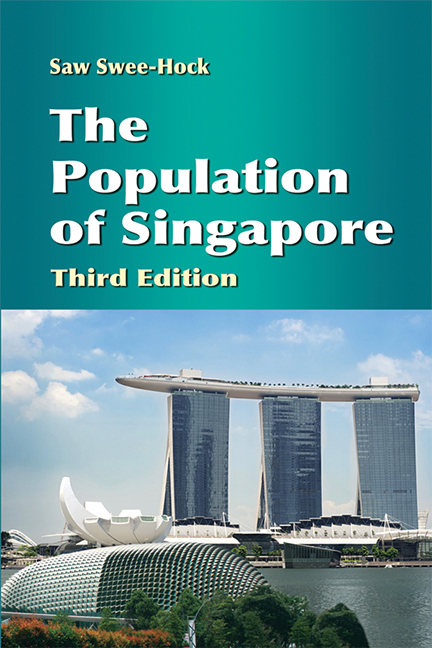Book contents
- Frontmatter
- Contents
- List of Tables
- List of Figures
- Preface
- Preface to Second Edition
- Preface to Third Edition
- 1 Background
- 2 Population Growth and Distribution
- 3 Changing Population Structure
- 4 Migration
- 5 Mortality Trends and Differentials
- 6 Marriage Trends and Patterns
- 7 Divorce Trends and Patterns
- 8 Fertility Trends and Differentials
- 9 Family Planning, Abortion and Sterilisation
- 10 Fertility Policies and Programmes
- 11 Immigration Policies and Programmes
- 12 Labour Force
- 13 Future Population Trends
- Appendix
- Bibliography
- Index
- Frontmatter
- Contents
- List of Tables
- List of Figures
- Preface
- Preface to Second Edition
- Preface to Third Edition
- 1 Background
- 2 Population Growth and Distribution
- 3 Changing Population Structure
- 4 Migration
- 5 Mortality Trends and Differentials
- 6 Marriage Trends and Patterns
- 7 Divorce Trends and Patterns
- 8 Fertility Trends and Differentials
- 9 Family Planning, Abortion and Sterilisation
- 10 Fertility Policies and Programmes
- 11 Immigration Policies and Programmes
- 12 Labour Force
- 13 Future Population Trends
- Appendix
- Bibliography
- Index
Summary
INTRODUCTION
Since the establishment of Singapore in 1819, there has accumulated over the years a mass of population statistics collected in censuses held from time to time. A brief survey of the sources, methods of collection and reliability of these statistics is presented here. The census records can be conveniently divided into three periods, namely, 1824–70, 1871–1947 and 1957–90. The first pertains to the period when some form of census was undertaken, usually by the police at very short irregular intervals, and the second and third to the time when proper and systematic censuses by trained enumerators were taken at regular and longer intervals. The third period is differentiated from the second by the censuses conducted separately for Singapore and not as part of the pan-Malayan region. By and large, the census records for the second and third periods are by far more comprehensive and reliable than those for the first period. Apart from this, the original published results of the censuses taken in the last two periods are still available but those of the censuses taken prior to 1871 are apparently lost; what is left are the figures quoted by various writers in their published works.
THE 1824–70 PERIOD
The taking of a census of the population in Singapore dates as far back as January 1824 when the first census of the whole island was carried out. Besides the figures quoted by various writers subsequently, nothing is known about this first population count. Following this, many other counts were taken, at first every year and then at longer intervals. T.J. Newbold, writing about the population of Singapore in 1839, was able to collect the figures of eleven censuses taken annually between 1824 and 1836, except in 1835 when no census was taken. The figures are classified by sex and race only, and they are rather defective. H. Marriott was of the opinion that the “figures for these early censuses cannot, however, be regarded as very accurate. In 1833… they were collected by the two constables who were attached to the Settlement and who had many other duties to perform. No fixed principle was adopted with regard to the headings ‘Europeans’, ‘Native Christians’ and ‘Tndo-Britons’. Some enumerating officers appeared to have included as ‘Europeans’ all who wore European clothes”.
- Type
- Chapter
- Information
- The Population of Singapore , pp. 337 - 346Publisher: ISEAS–Yusof Ishak InstitutePrint publication year: 2012



